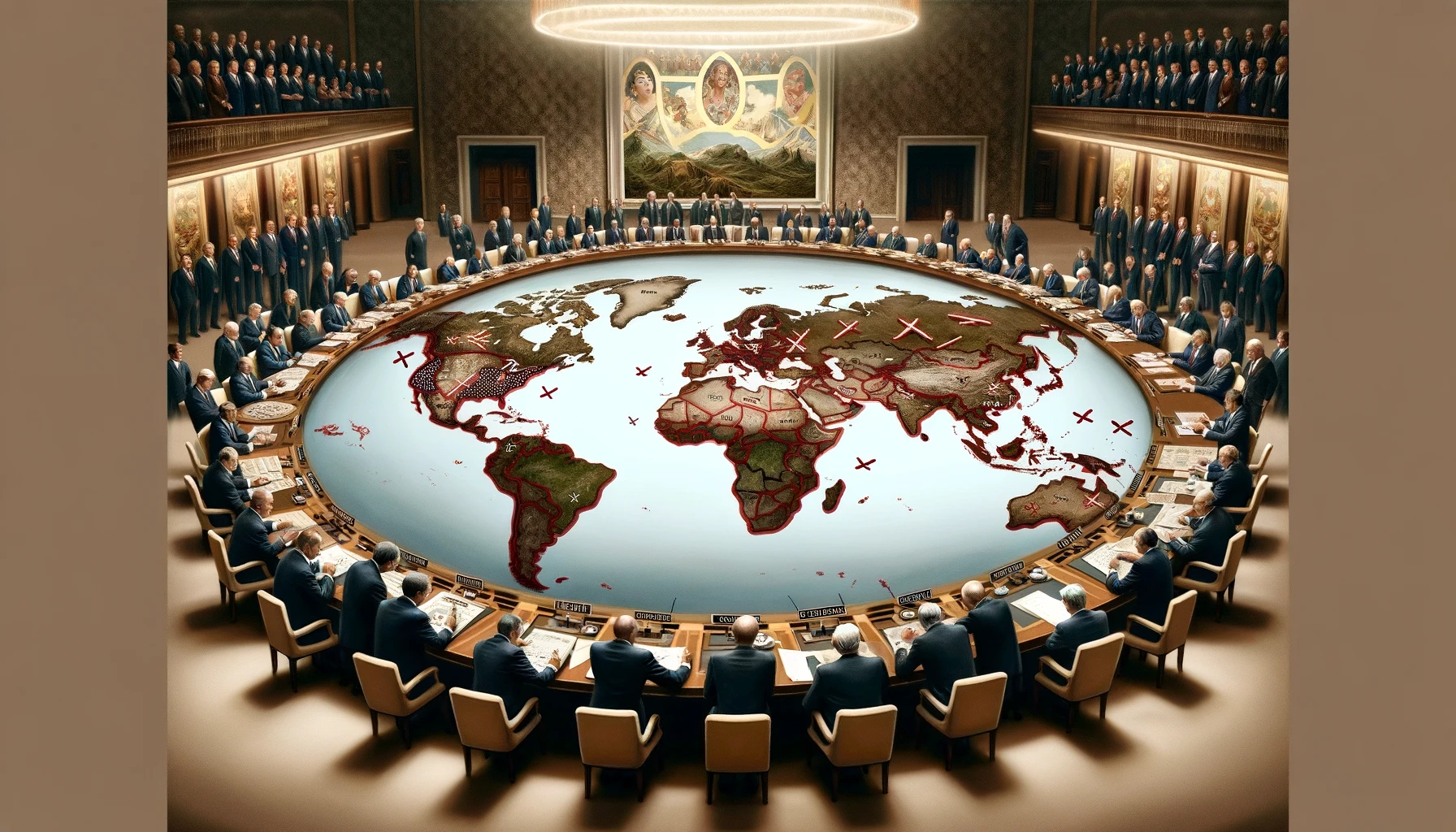In a stunning revision of geography and international law, world leaders convened this week to redraw the boundaries of where and how the concept of ‘self-defense’ applies, effectively excluding certain countries based on a new set of criteria that has both baffled and alarmed global observers.
The meeting, held at a secretive resort known for its world-class golf courses and equally discreet privacy policies, concluded with the adoption of the “Geographically Selective Defense Initiative” (GSDI). This initiative outlines a novel approach to international relations, wherein the right to defend one’s nation depends heavily on one’s geographical and political position on a newly designed world map.
“Think of it as a game of Risk, but with real countries and real stakes,” explained a senior U.S. diplomat, who preferred to remain anonymous. “We’ve literally redrawn the map to highlight which countries can claim self-defense and which should consider other hobbies, like perhaps stamp collecting or bird watching.”
The revised map features a series of color-coded zones. Nations within the blue zones are entitled to full self-defense rights, complete with international backing and media support. Those in the red zones, however, will find their self-defense claims met with skepticism, sanctions, or stern rebukes.
“This new system simplifies things greatly,” stated the British Foreign Secretary, while unveiling a large, ornate globe with the new zones clearly marked. “No more confusion. If you’re in red, just remember: retreating is your best defense.”
Critics have slammed the initiative as blatantly unfair and worryingly reminiscent of colonial-era practices. “It’s outrageous,” declared an activist during a protest outside the UN. “They’re playing board games with real lives and treating sovereignty like it’s a party trick.”
But supporters argue that the GSDI brings much-needed clarity to international affairs. “We need to know who can do what, and when,” said one proponent. “It’s about maintaining a balance of power, or at least, the appearance of one.”
The news has sent shockwaves through international law circles, with scholars scrambling to update textbooks and lecture notes. Meanwhile, countries in the red zones are reportedly considering a range of responses, from forming their own alliances to investing in global PR campaigns to shift their colors on the map.
As the new map takes effect, the world watches anxiously to see how these redrawn boundaries will influence global peace and security. Meanwhile, sales of traditional world atlases have plummeted, replaced by the new, politically color-coded globes that are now must-have items in every world leader’s office.

